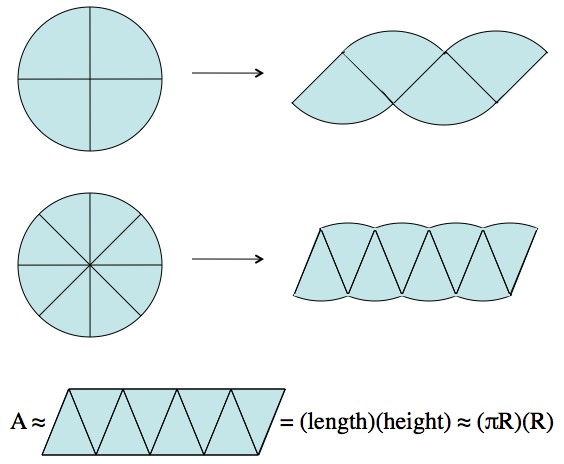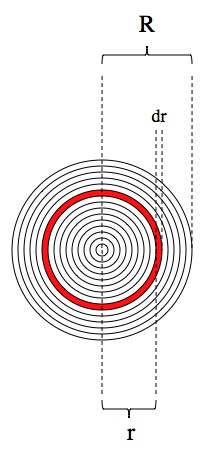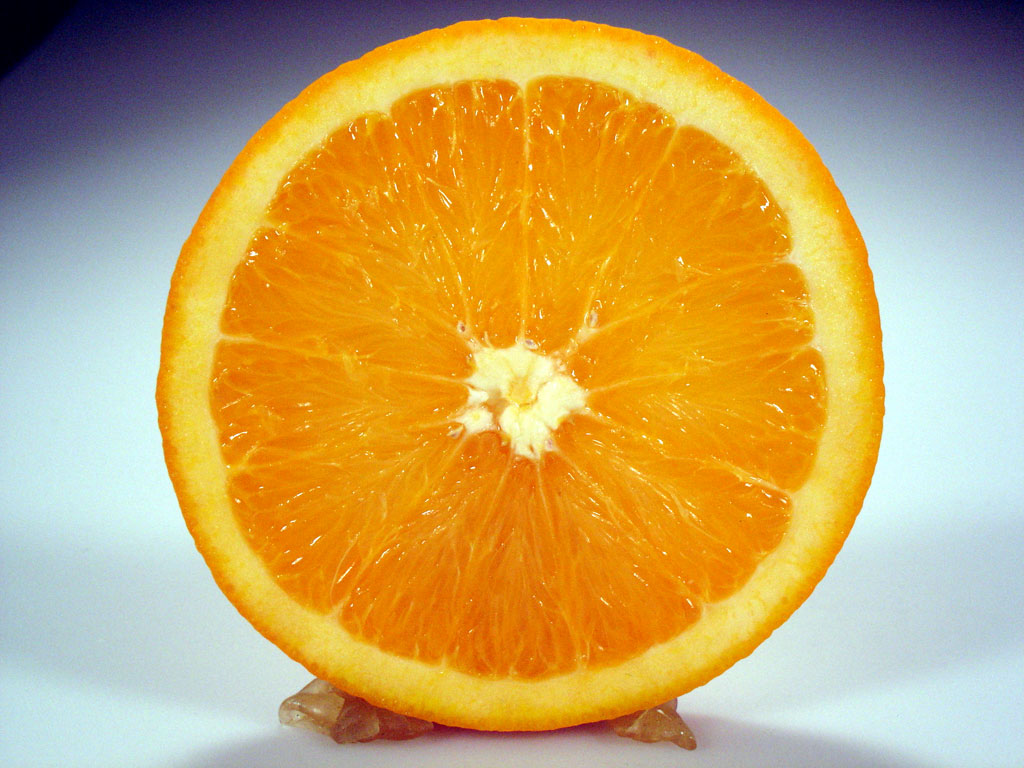Physicist: To demonstrate this you typically have to use either calculus or oranges. They both use more or less the same ideas, they’re just applied in different ways.
Oranges:
Imagine taking an orange wedge and opening it so that the triangles all point “up” instead of towards the same point. If you interlaced two of these then you’d have a small brick that’s roughly rectangular.

By slicing the circle with thinner and thinner triangles, the lines on the “wavey shape” all straighten out into a rectangle.
As more triangles are used, the curved end produces less pronounced bumpiness and the straight sides come closer and closer to being straight up and down, making the brick rectangular. The height becomes equal to the radius, while the length is half of the circumference (C = 2πR) which now finds itself running along the top and bottom. As the number of triangles “approaches infinity” the circle can be taken apart and rearranged to fit almost perfectly into an “R by πR” box with an area of πR2.
This is why calculus is so damn useful. We often think of infinity as being mysterious or difficult to work with, but here the infinite slicing just makes the conclusion infinitely clean and exact: A = πR2.
Calculus:
On the mathier side of things, the circumference is the differential of the area. That is; if you increase the radius by “dr”, which is a tiny, tiny bit, then the area increases by Cdr where C is the circumference. We can use that fact to describe a disk as the sum of a lot of very tiny rings. “The sum of a lot of tiny _____” makes mathematicians reflexively say “use an integral“.

With calculus, you can find the area of a circle by adding up the areas of a lot (infinite number) of very thin (infinitely thin) rings. Here a random intermediate ring is red.
Every ring has an area of Cdr = (2πr)dr. Adding them up from the center, r=0, to the outer edge, r=R, is written: .
This is a beautiful example of understanding trumping memory. A mathematician will forget the equation for the area of a circle (A=πR2), but remember that the circumference is its differential. That’s not to excuse their forgetfulness, just explain it.








17 Responses to Q: Why is the area of a circle equal to πR2?